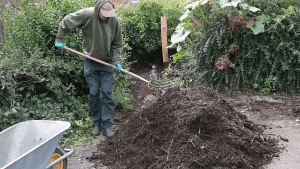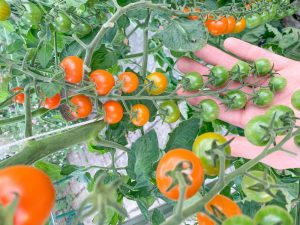Alpine seed sowing

Last weekend I ran another free gardening advice session in Wickhambreaux Village Hall. The previous advice session was well attended, but this one was very quiet (it’s winter and Storm Darragh was happening).
However, the quiet day still brought some great gardening conversation and gave me the chance to do some winter seed sowing. I had a load of alpine seeds that we want to grow and transplant into our new crevice garden in 2025.
Here are some of the alpine seeds that I want to grow for our crevice garden.

Isn't spring a better time to sow seeds?
Spring can can be a great time to sow seeds; but many plants need exposure to the winter weather to germinate.
Over winter, seeds take in moisture, freeze, and crack which enables the cotyledon and radicle to emerge in spring when the weather warms up.
How to sow alpine seeds
Sowing alpine seeds couldn’t be easier.
This is what you might expect to seed when you open a seed packet.

Some seed packets come with thousands of seeds in them. But others (especially more “choice” plants or F1 hybrids) often come with far fewer.
1. Fill the pot
I begin by filling the pot (9cm plastic nursery pot) to about 1cm from the rim with my Alpine Seed Sowing Mix. I give it a very light “firm” (just enough to make sure the compost is level).

2. Sow the seed
Then I sprinkle the seeds as evenly as I can over the surface of the compost.
If your seed packet contains lots of seeds, you shouldn’t sow them all in the same pot. For most seeds, I don’t sow more than 20 in a 9cm pot. Otherwise they can become too congested after germination.

3. Cover with alpine grit
The seed is then covered with a thin layer of washed horticultural/alpine grit. Bigger seeds should really have a thicker layer than smaller seeds (which don’t have as much carbohydrate reserve to push through a thick layer of grit). However, I generally fill all of my pots to the rim with gravel (so a 1cm layer).
If you want to use a thinner layer of gravel you could fill the pot higher with compost to reduce the thickness of gravel required to reach the rim of the pot.
Remember to label your pots very clearly!

4. Place in your garden
The seeds can then be moved to an outside position in your garden. I put ours on a metal table which will help to keep the rodents away.
All that remains is to wait until germination occurs (hopefully) in spring.





Sowing Alpine seeds in the winter months! Fascinating that the cold facilitates the germination and growing process. Looks and feels like a good occupation for gardeners who have ‘itchy fingers’ during the cold months and can’t wait to ‘get going’ in the garden.
I never realised alpines from seed were so easy to grow. I tend to think of them as needing more specialist care but I guess the Alpines in the mountains do it all themselves!,
I always find your posts very interesting Joe and especially enjoy the extra ‘nuggets’ of fascinating facts that you tuck into your explanations.
Thanks mam. Yea, some alpines are very tricky. But there are a lot that do really well in home gardens. A lot of them aren’t true alpines, just small plants that look good in a rock garden.